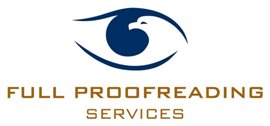THERE’S A LOT TO BE SAID FOR ‘SAID’

If you force-feed readers with dialogue tags, they might lose their appetite.
There are FOUR common mistakes writers make when creating dialogue:
- Overuse of dialogue tags.
- Homogenous use of dialogue tags.
- Underuse of dialogue tags.
- Overuse of adverbs/use of inappropriate verbs as dialogue tags.
Let’s look at an example of each:
Overuse of dialogue tags
‘What do you mean?’ Mary asked.
‘Don’t be dense,’ replied Tom.
‘Don’t be rude,’ Mary retorted.
‘I’m not,’ said Tom. ‘You should know what I mean; I explained it yesterday.’
‘You did?’ Mary said. ‘I don’t recall.’
The first two lines tell us this is a conversation between two people: Mary and Tom, yet each line has a dialogue tag which makes the flow of the dialogue laborious for readers. At least two of the tags are unnecessary.
Homogenous use of dialogue tags
‘What do you mean?’ said Mary.
‘Don’t be dense,’ said Tom.
‘Don’t be rude,’ said Mary.
‘I’m not,’ said Tom. ‘You should know what I mean; I explained it yesterday.’
‘You did?’ said Mary. ‘I don’t recall.’
In this example, the same dialogue tag has been used, and each time it appears before the character’s name. While using ‘said’ is unobtrusive and helps keep readers focussed on the dialogue, using it unnecessarily and/or in the same order can make dialogue uninspiring and boring for readers.
Underuse of dialogue tags
Mary looked at Tom, then at Jack, and shrugged her shoulders.
‘What do you mean?’ she asked.
‘Don’t be dense,’ said Tom.
‘Don’t be rude.’
‘I’m not.’
‘You are, Tom.’
‘She should know what I mean; I explained it yesterday.’
‘You did? I don’t recall.’
Here, a third person – Jack – is present. We can guess the first line is said by Mary, because ‘she’ is the only female present, and we know the second line is said by Tom. However, without dialogue tags, it’s unclear who’s saying the subsequent sentences. The reader has to guess.
Overuse of adverbs/inappropriate verbs as dialogue tags
One of the most common mistakes is overusing adverbs or using inappropriate verbs as dialogue tags. Like this:
‘What do you mean?’ Mary asked inquisitively.
‘Don’t be dense!’ Tom shouted.
‘Don’t be rude!’ Mary retorted angrily.
‘I’m not,’ Tom countered tersely.
‘You are, Tom,’ Jack laughed.
‘She should know what I mean; I explained it yesterday,’ Tom argued.
‘You did? I don’t recall,’ Mary frowned.
To start, there are unnecessary adverbs like ‘inquisitively’ – if Mary’s asking a question, obviously she’s inquisitive, and Mary is clearly upset by Tom’s rude response, so ‘angrily’ could be deleted.
Next, there is the unnecessary use of ‘shouted’ – the exclamation mark is enough to tell us that Tom raised his voice, and Tom has made his point – ‘argued’ is unnecessary.
Lastly, we have inappropriate verbs used as dialogue tags. ‘Laughing’ and ‘frowning’ do not produce speech. To convey Jack’s reaction when he says his line, it could be written: ‘You are, Tom,’ said Jack, laughing.
While using ‘said’ is unobtrusive and helps keep readers focussed on the dialogue, using it unnecessarily and/or in the same order can make dialogue uninspiring and monotonous.
In summary:
- Don’t overuse dialogue tags when it’s obvious who’s speaking.
- Mix it up – using ‘said’ keeps readers focussed on the dialogue; however, only use it where necessary, and not always in the same order.
- Underuse of dialogue tags – where more than two people are speaking, don’t confuse readers. Be clear about who’s saying what.
- Don’t distract readers from the dialogue with unnecessary adverbs, or annoy them by using inappropriate verbs as tags.
Do you have any more tips for writers of dialogue? Let’s hear them!
